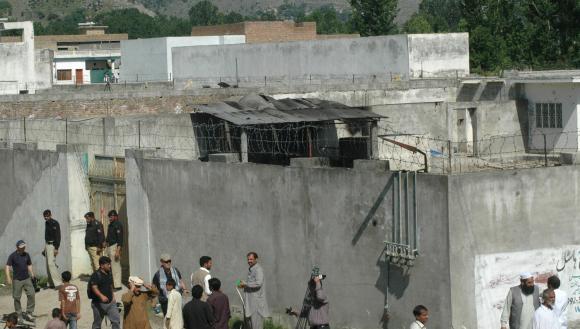 Bin Laden's Abbottabad CompoundSome in the media and others with an axe to grind, including US Government officials unhappy over the lack of cooperation from Pakistan, have been quick to jump on Osama Bin Laden’s final location as evidence that the Pakistani regime or elements within it had been sheltering him. How else to explain his location so close to a major Pakistani military establishment?
Bin Laden's Abbottabad CompoundSome in the media and others with an axe to grind, including US Government officials unhappy over the lack of cooperation from Pakistan, have been quick to jump on Osama Bin Laden’s final location as evidence that the Pakistani regime or elements within it had been sheltering him. How else to explain his location so close to a major Pakistani military establishment?
But parts of this theory do not make sense. If Pakistan was sheltering bin Laden, why do it so close to a military base and thus risk a political firestorm if he was discovered? Why were there no bodyguards, let alone Pakistani soldiers, with bin Laden at the end to protect him? Why is it that no one in the regime was tempted to provide the US with information about his location in return for the $25 million bounty offered for the phantom terrorist leader?
I’ve written before for EA about the impact of the drone campaign in Pakistan. Now it appears that the drones, even though they played no part in bin Laden's death, did have a supporting role in determining where he would spend the final years of his life.
After Bin Laden's departure from Afghanistan, soon after the US-supported overthrow of the Taliban in 2001, it was widely assumed that he would be in the tribal areas near the Afghanistan-Pakistan border. This probability was altered, however, by the arrival of the CIA-operated drones in Pakistan in 2004. Unseen and unheard, these unmanned devices brought sudden death to the tribal areas without any possibility of a response. (In the first post-bin Laden operation, a drone attack killed 10 people in North Waziristan yesterday.)
The only defence against the strikes was to stay indoors around the clock and not draw attention to oneself or to leave the area. Bin Laden did both. In 2006, he moved in Abbottabad, the military town north of Islamabad, ditching his bodyguards and remaining in the same room in the compound for the next five years.
Bin Laden was well aware of the possibility of surveillance, followed by death from the sky. Living in a house close to a Pakistani military academy, he greatly reduced, if not eliminated, the chance aerial attacks --- these might not just kill civilians but, more significantly, accidentally strike Pakistani military assets. One former CIA official expressed admiration for Bin Laden’s strategy: “You’ve got to give him credit for his tradecraft.”
Bin Laden clearly gambled that the big threat to his existence came from American airpower drawn to him by US technology. Before 9-11, he had abandoned the use of satellite telephones because of US eavesdroppers could trace his location. He also got rid of the Arab entourage that would have made him stand out in his hideout town and increased the possibility of is betrayal. Instead, he relied on the human factor through a single trusted Pakistani courier who would never give him away intentionally. Ultimately, it was this single connection to the outside world that remained one too many before the might of the US intelligence community.
Steve Hewitt is Senior Lecturer in American and Canadian Studies at the University of Birmingham and author of Snitch: A History of the Modern Intelligence Informer.